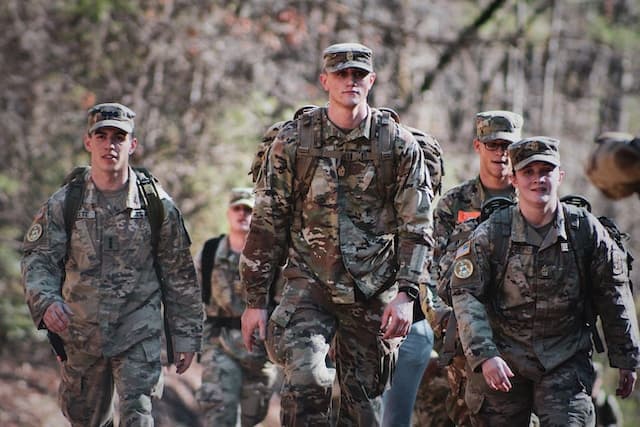The might of the United States military is unparalleled, a symbol of strength, dedication, and excellence. The distinction that sets it apart from the rest of the world’s armies is the rigorous training that every soldier must undergo. These training regimes, each tailored to specific branches, are essential in transforming ordinary civilians into warriors prepared for modern warfare’s unimaginable challenges. This in-depth look will focus on the training of various branches within the U.S. military, evaluating what makes each unique, demanding, and instrumental in maintaining national security.
U.S. Navy: Training Beyond Limits
Navy SEALs
The training required to become a Navy SEAL is legendary in its difficulty and is considered one of the world’s most physically and mentally challenging training programs. The SEAL training process involves a series of phases designed to test a candidate’s limits.
BUD/S (Basic Underwater Demolition/SEAL Training)
- Hell Week: This week is notorious for testing mental and physical endurance, as recruits undergo nearly continuous training with little to no sleep. It involves activities such as carrying logs, running with boats on their heads, and continuous physical exercises.
- Dive Phase: Training to become an expert diver, SEAL candidates learn complex dive physics, underwater skills, and how to handle extreme water conditions.
- Land Warfare Phase: This includes learning small unit tactics, land navigation, demolitions, and weaponry.
The SEALs are not just trained to break but remolded into warriors capable of accomplishing what seems impossible.
U.S. Navy Specialization
Apart from the SEALs, the Navy offers other specialized roles, such as submariners, pilots, and intelligence officers. Each requires specialized training, focusing on technical expertise and unique operational needs.
U.S. Marines: Masters of Sea and Land
Marine Corps Basic Training
The Marine Corps has some of the longest and most grueling basic training in the U.S. military. Known as “The Crucible,” this 54-hour event includes a 45-mile march, simulated casualties, and mental and physical challenges designed to foster teamwork and resilience.
Marine Raider Regiment (MRR)
Marine Raiders undergo a rigorous selection process, including physical fitness tests, swim qualifications, and land navigation exercises. This process ensures that only the finest Marines are chosen for specialized missions.
U.S. Army: Green Berets and Beyond
Special Forces Qualification Course (SFQC)
The Green Berets are known for their exceptional skills in unconventional warfare. Training includes:
- Language Training: Green Berets must learn a new language to communicate effectively during overseas missions.
- Survival, Evasion, Resistance, and Escape (SERE) Training: Teaching survival skills to evade capture and resist interrogation.
- Combat Diving: A mentally and physically taxing course designed to teach underwater infiltration techniques.
Army Rangers
The 75th Ranger Regiment requires completing the Ranger Assessment and Selection Program (RASP), focusing on physical endurance, mental toughness, and tactical proficiency. This selection ensures that only the most capable soldiers join their ranks.
U.S. Coast Guard: Guardians of the Sea
Despite misconceptions, the U.S. Coast Guard has its own demanding training regimen. It includes:
- Basic Training: Eight weeks of intense physical and academic training to prepare for missions, such as search and rescue, law enforcement, and environmental protection.
- Specialized Schools: Various schools focus on specific roles, such as aviation, maritime enforcement, or intelligence.
U.S. Air Force: A Symphony of Intelligence and Physicality
The U.S. Air Force emphasizes intelligence alongside physical prowess. Its training includes:
- Basic Military Training (BMT): A blend of physical training, drill and ceremonies, and classroom learning focused on leadership, teamwork, and problem-solving.
- Air Force Special Operations Forces (SOF): SOF training is intensive and multifaceted, focusing on airpower, infiltration, reconnaissance, and more.
U.S. Space Force: Training for the Next Frontier
The U.S. Space Force, as the newest branch, is still defining its training regimen. Training focuses on space warfare, technological expertise, and the mental fortitude required to operate outside Earth’s atmosphere.
| Branch | Specialized Training | Physical Demands | Mental Challenges |
|---|---|---|---|
| U.S. Navy | SEAL Training, Combat Dive School | High | Moderate |
| U.S. Marines | Marine Raider Regiment (MRR) | Very High | High |
| U.S. Army | Green Berets, Combat Diving | Very High | High |
| U.S. Coast Guard | Sea Legs, Mental Drills | Moderate | Moderate |
| U.S. Air Force | Air Force Special Operations Forces (SOF) | Moderate | High |
| U.S. Space Force | Guardian Training | Unknown | High |
Conclusion
The U.S. military is a complex and robust system designed to cultivate warriors who are equipped to handle the most challenging scenarios imaginable. From the Navy’s unbreakable SEALs to the Marines’ unparalleled adaptability, from the Army’s legendary Green Berets to the Space Force’s pioneering efforts, the American military’s training programs ensure that the nation remains secure and its military remains unparalleled. These demanding regimens are not merely about physical might but about building character, resilience, and the ability to adapt and overcome.
Each branch offers unique training experiences reflecting its mission and role in the greater military strategy. The training equips service members with the specific skills they need to excel in their roles while also fostering the mental strength necessary to endure the unthinkable. Ultimately, it’s not just about which branch has the hardest military training; it’s about recognizing the value, dedication, and excellence that every member of the U.S. military embodies. Their rigorous training is a testament to their commitment to their country and a reminder to us of the sacrifices they make to keep America safe.
